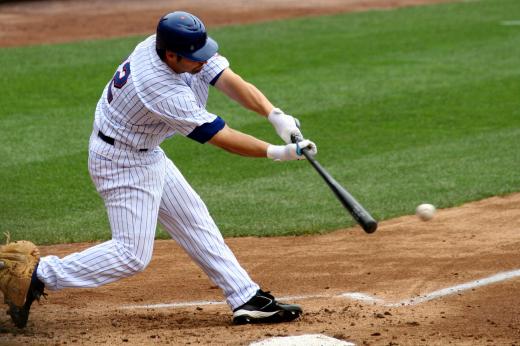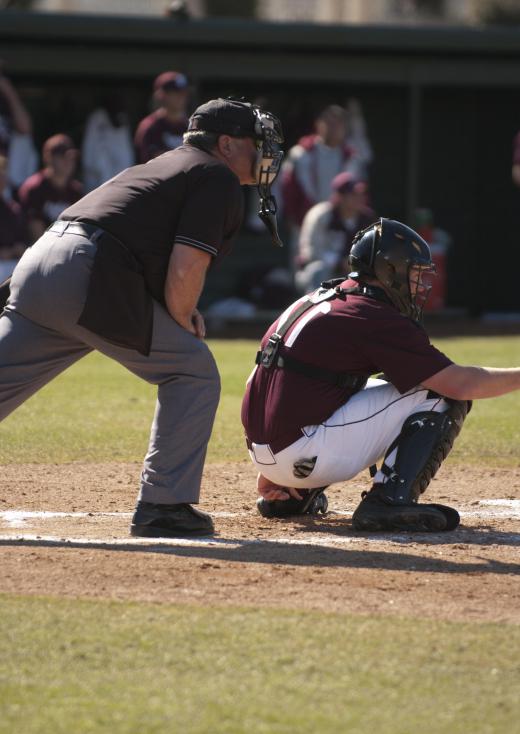A few unscrupulous baseball players will use several illicit or patently illegal methods in order to improve their own performance or hamper the performance of their opponents. One such illegal practice is the creation and use of a corked bat. A corked bat has been artificially lightened by drilling a hole in the end and filling the void with a substance such as cork, sawdust or compressed rubber balls, also known as "super balls."
Corking a wooden baseball bat is a relatively simple process, but disguising the results is considered more art than science. First, a standard ash baseball bat is firmly secured in a vise or other clamping device. A drill bit with a diameter between 1/2 and 1 inch (1.3 to 2.5 cm) is then drilled into the center of the end of the bat. Some sources say any drilling past 6 inches can seriously damage the structure of the bat, but others say the hole can be as deep as 10 inches without compromising the bat's integrity.

Once an acceptable hole has been drilled into the bat, the void is filled by packing it with either a solid cylinder of cork or ground cork pieces. Some may use sawdust or small compressed rubber super balls instead. The drilled hole in a corked bat must be filled with something, because the sound of a hollow bat is very easy to distinguish from a solid version. Once the cork or other filler has been added, the bat corker seals off the end of the doctored bat with a combination of wood glue and sawdust. Once the excess sawdust and glue have been sanded off, a corked bat should be indistinguishable from a legal bat.

Players who use a corked bat often believe they can move the bat faster during a swing, which gives them slightly more time to gauge the location of a pitched ball before committing themselves to a hard swing. The cork or other filler material absorbs some of the kinetic energy of the ball, however, so total distance may be compromised by a few feet. The hope is that the player's own muscular power will overcome this deficit and the ball will still travel deep into the outfield or out of the park for a home run.
There are legal ways to lighten the weight of a standard baseball bat without resorting to a corked bat, but these methods have their limitations. Players can legally reduce the weight of their bats by shaving some wood off the handle area, but this practice could lead to more broken bats during a game. A shorter bat can also provide a faster swing, but the player may not be satisfied with the reduced "sweet spot." Lighter weight standard baseball bats can also be ordered, but those players who believe in the advantages of a corked bat often prefer to use an illegal version.
Baseball umpires and other officials often discover the presence of a corked bat when it shatters during play. The suspected bat can be confiscated for further examination, and the player can be severely penalized if the bat has indeed been corked or altered in any other way. It is not strictly illegal to use a corked bat during practice sessions or non-professional baseball games, but there is very little scientific evidence which backs up the belief that a corked bat is fundamentally more advantageous than a standard wooden baseball bat.
